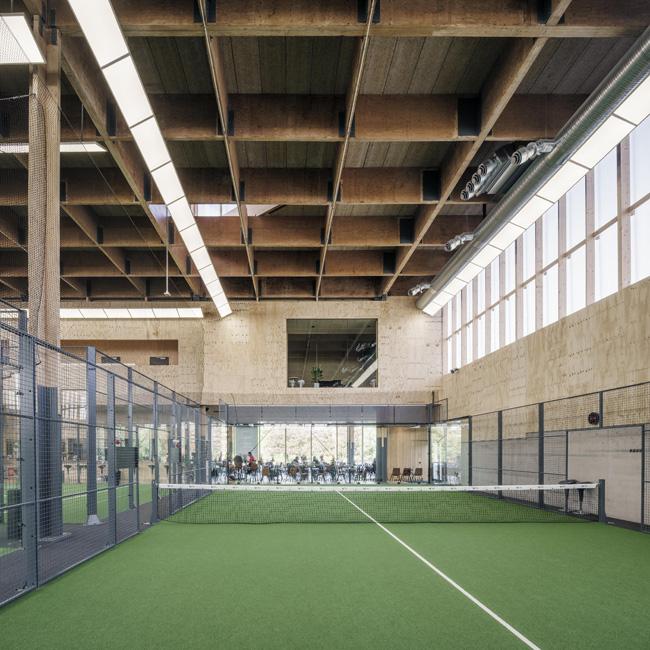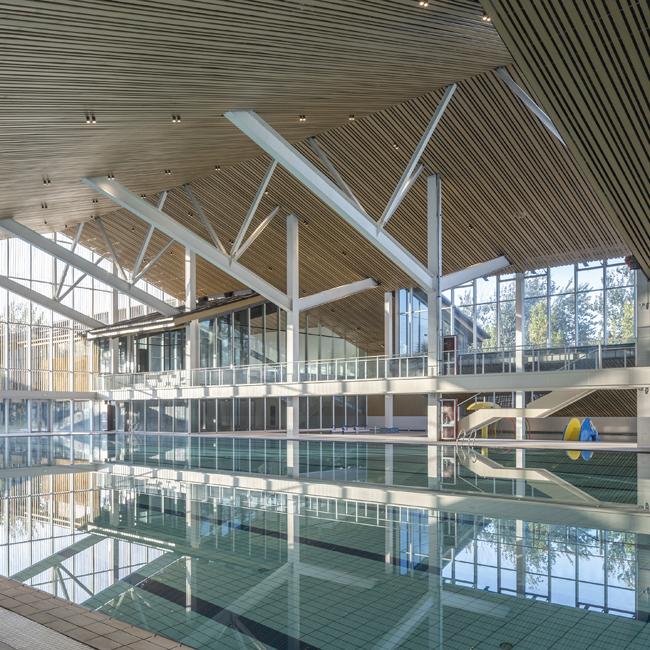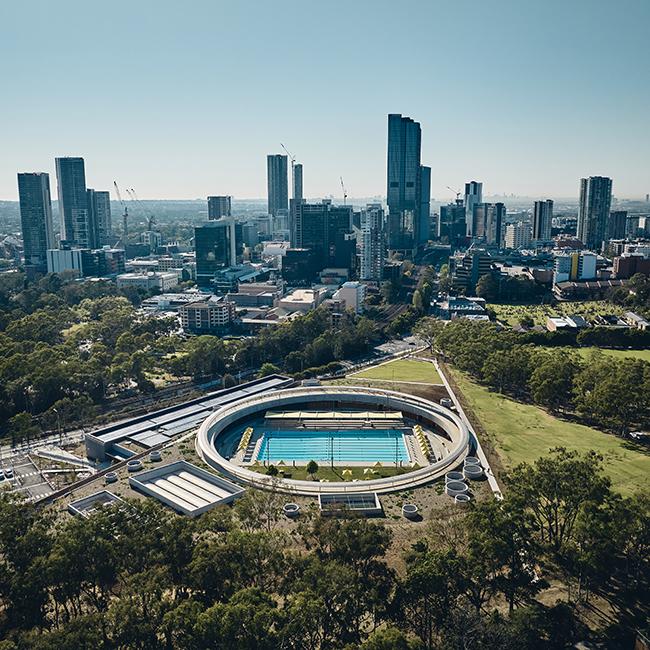Modern events venue for sports and culture with powerful heritage
published in sb 2/2021
The Helsinki Olympic Stadium, built in 1938, is an iconic landmark. After 80 years, its core functions – sports and events – have evolved along with the contemporary needs of its facilities. K2S together with Architects NRT have worked on the stadium’s preservation plan with simple forms and expressions. K2S first designed a new wooden canopy for the building in 2005, followed by 20,000 m² of multifunctional spaces for events and activities, including the visitor centre. The preservation plan included restoration efforts and combining the preserved areas with new interventions, additions and premises.

photo: Tuomas Uusheimo
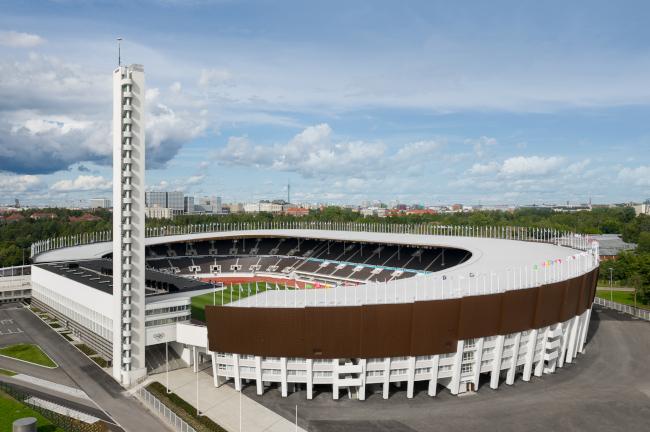
photo: Wellu Hämäläinen
The Helsinki Olympic Stadium is a building with significant national value. It is a combination of the pure functionalist architecture of the 1930s and the external appearance of the 1952 Helsinki Olympics. For many Finns, the stadium, the result of an open architectural competition held in the 1930s won by architects Yrjö Lindegren and Toivo Jäntti, symbolises the dawn of a new era for the young nation.
The stadium has had to adapt to several new usages during the decades since the Helsinki Olympics. As a result, the original pureness of the architecture had been blurred due to functional changes and additions. The key objective was to ensure that the conservation and revitalisation of the stadium responds to all future requirements of international sport events as well as preserving the cultural value of its heritage.
Good to know

photo: Wellu Hämäläinen
Location
Helsinki, Finland
Client
The Stadium Foundation
Contractor
City of Helsinki, Urban Environment Division
Architects
K2S Architects
FI – 00260 Helsinki
www.k2s.fi
Architects NRT
FI – 00100 Helsinki
www.n-r-t.fi
Lead Architects
Kimmo Lintula (K2S Architects)
Kari Raimoranta (Architects NRT)
Structural design
Sweco Finland Oy
Landscape design
Maisema-arkkitehtitoimisto Näkymä Oy
Author
K2S Architects
Photos
Tuomas Uusheimo, Wellu Hämäläinen
Opening match
24 August 2020
Construction costs
EUR 330 million
Prefer to have your own copy? Or even better: subscribe to the sb magazine - and you receive all six issues per year
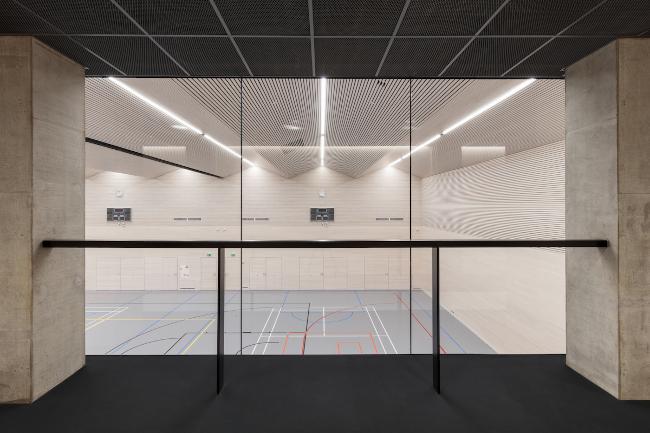
photo: Tuomas Uusheimo
The conservation respected and preserved the original 1930s and 1950s architecture. Through restorations, repairs and modified reconstruction, the stadium has gained new multipurpose premises for the public and significant improvements in logistics. The revitalised entity appears as a familiar and distinctive monument with humane dimensions.
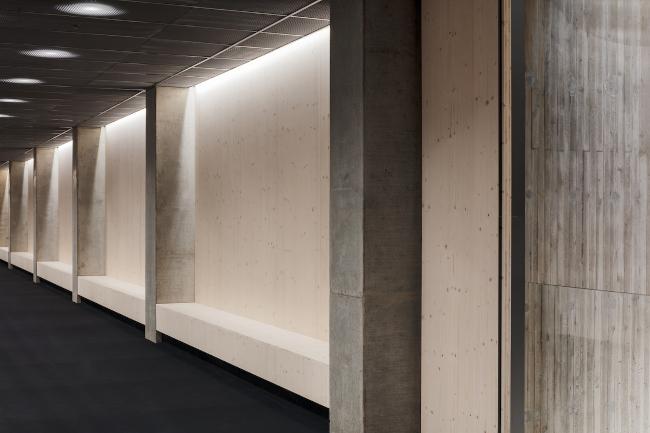
photo: Tuomas Uusheimo
The stadium has been refurbished in accordance with the guidelines of FIFA, UEFA and World Athletics. New entrances to the stands and the public galleries under the structures ensure the free flow of the public during events. The plastered facades and the visible concrete structures with the brickwork were restored to their original appearance. The old bench rows were replaced with new individual seats. In keeping with the original architecture, many surfaces have been executed in wood so that the stadium retains its distinct Finnish character. Reinforcing this impression, a special wood composite was developed for the seats and also meets the strict fire safety requirements.
The new canopy covers the stands almost entirely
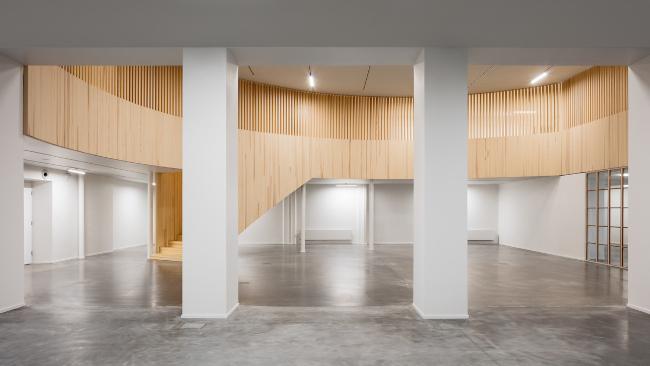
photo: Tuomas Uusheimo
The stadium was extended to include 20,000 m² underground, including new multipurpose premises and an indoor running track. The huge underground loading and unloading areas on the north side are mainly available for the event area. Other logistics systems such as lifts and installations have also been fully replaced. For sports and cultural events, trade fairs and conferences, numerous multifunctional indoor amenities are housed under the forecourt. These can be used independently of stadium operations. Thus, the stadium can serve as the main venue for sports and cultural events in Finland all year round.
All the materials used in the project are directly associated with the history of the stadium. Timeless and durable solutions with white concrete, wood and glass in the new premises merge into the existing parts of the stadium. Together they form the new refurbished Helsinki Olympic Stadium.
